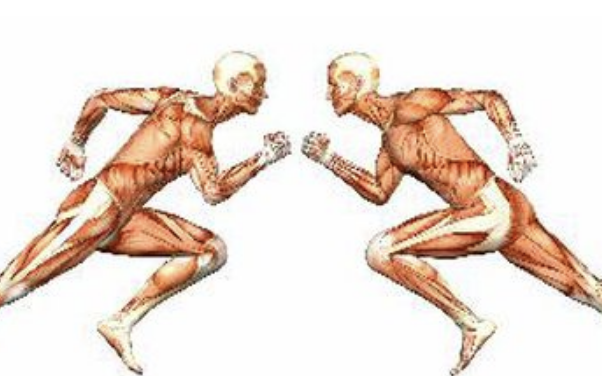By Catharine L. Kaufman—a.k.a. The Kitchen Shrink
If the word minerals makes you think of copper plumbing or crystal geodes, turn your imagination inward and you’ll discover that 14 distinct minerals are among the essential components that keep your—and human bodies in general—functioning in a healthy way. We absorb minerals along with other nutrients from our diet, just as plants absorb them from the soil in which they  grow.
grow.
(Can’t miss this opportunity to highlight that compost-enriched organic soil is what yields the most nutritious vegetables and fruits, thanks to its well-balanced content of trace minerals and other nutrients.)
Here is a quick primer of this little-known health-agent: There are two classes of minerals—the major ones, called macro-minerals, include calcium, phosphorus, potassium, sulfur, sodium and magnesium; and the micro or trace minerals, which include zinc, selenium, iron, manganese, copper and cobalt.
Even though the human body needs less (i.e. only trace amounts) of the latter, they are equally vital for the maintenance of a healthy bio-system, with the elements properly balanced. Too little would cause deficiency problems, while too much would unleash dangerous and potentially cancer-causing free radicals.
Zinc, for example, empowers the immune system, ratchets up (mostly male) libido, perks up the senses of smell and taste, sharpens vision and helps keep the mind on its toes by ensuring that enzymes and neurotransmitters are functioning without a hitch. Pomegranates top the list of foods that contain zinc, so toss these ruby gems into stews and sauces, salads of all sorts and smoothies. Other good zinc sources include avocados, blackberries, soybeans, lima beans, chickpeas (in humus or other forms), wheat germ, dark leafy greens, almonds, pecans, walnuts, wild-caught seafood, mushrooms and dark chocolate with high cocoa content.
Since zinc is more easily absorbed from animal foods than from produce, vegetarians should consult nutritionists or holistic health practitioners to find out whether they might need to supplement their diet with good quality plant-based supplements (not the mass-produced, over-the-counter synthetic-based ones).
Manganese—not to be confused with magnesium—tames the harmful free radicals, promotes feelings of wellbeing and ensures normal growth and development of cells and bones. Manganese deficiency can cause such serious problems as high cholesterol, memory loss, osteoporosis, tremors, poor vision, fluttering heartbeat, epileptic seizures and even infertility in women. So keep your manganese intake at the appropriate level by eating mussels and clams in a spicy seafood cioppini or golden Spanish paella; by adding (organic) whole grains and wheat germ to your diet, as well as such southern delights as collard greens and okra. Go also for sweet potatoes (boiled and mashed, roasted or baked in a casserole); flavor your life with pineapple and berries of every sort (gently mixing them into green summer salads, a quinoa bowl or blended into–preferably goat–yogurt), with a bubbly cobbler or trifle, or by gobbling up the raw berries by the handful.
Copper was even prescribed by the ancient Greek father of modern medicine: Hippocrates, who found it an excellent healing agent for various ailments. Eat one or two copper-containing foods a day—such as lentils, chickpeas, hazelnuts, almonds, sunflower and chia seeds, raisins, dried apricots, avocados, asparagus, kale, turnip greens and goat cheese. Remember, a little copper goes a long way in helping the body to produce hemoglobin (the iron-rich, oxygen-transporting protein in red blood cells), as well as collagen—the connective tissue protein that delays age-related sagging and wrinkling of skin.
Iron is an essential source of vitality and energy. It is more abundant in animal protein such as red meat, chicken and turkey than in plants. We strongly recommend, however, sticking to grass-fed and organic products. Iron sources also include fish and seafood (oysters, clams, sardines, halibut, salmon, etc.), lentils, pumpkin seeds, dried fruits like raisins and apricots. But above all, it’s important to load up on dark leafy greens—especially Popeye’s favorite, the iron-rich spinach.
Selenium is also an antioxidant powerhouse, as well as a supporter of thyroid and reproductive function, the immune system and heart health. What’s more, it reduces asthma symptoms and inhibits the creation of cancer cells. Adding eggs, sunflower and chia seeds, black walnuts, herring, salmon, turkey and mushrooms to your diet is a good way to keep your trace levels of selenium where they serve you best.
Caveat: It is advisable to stay away from Brazil nuts, even though they are famous for their high concentration of selenium, since they have been found over the last several years to be loaded with the radioactive element radium and with toxic compounds produced by certain molds known to cause liver damage and cancer.
As a reward for your patience and attention to the above ‘tutorial,’ here is, fresh from my kitchen, an innovative version of taste buds’-pleasing hummus dip I recently tested on my family, with more than satisfying results. Hope you enjoy it, too.
Roasted Walnut Hummus
¾ cup toasted walnuts
3 and ½ tablespoons walnut oil
1 garlic clove, peeled
1 – 15-ounce can of cooked chickpeas (drained)
Zest from one tangerine
¼ cup Meyer lemon juice
Sea salt, cumin and cayenne pepper to taste
In a blender or food processor purée walnuts, oil and garlic until smooth. Add chickpeas, juice, zest and seasoning until well blended. Transfer to a decorative bowl, garnish with toasted walnuts, and serve with pita chips and assorted raw vegetables.
(If you prefer a more exotic blend, instead of the chickpeas you may substitute half edamame and half English peas—both cooked, of course—and add 2 tablespoons of fresh chopped mint.)

